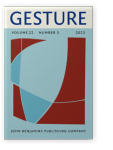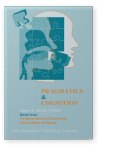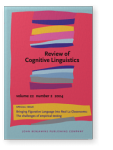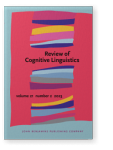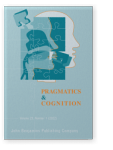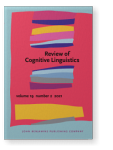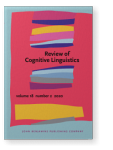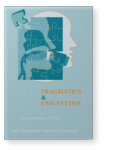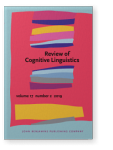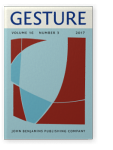Heng Li
List of John Benjamins publications for which Heng Li plays a role.
Journals
ISSN 0929-0907 | E-ISSN 1569-9943
ISSN 1877-9751 | E-ISSN 1877-976X
2023 Move in a crowd: Social crowding and metaphorical perspectives on the movement of events in time Review of Cognitive Linguistics 21:2, pp. 469–485 | Article
When spatializing time, individuals can either say that they walk towards the future as though time is a stationary landscape (called ego-moving perspective), or that the future time moves towards them (called time-moving perspective). A substantial body of experimental research has shown that… read more
2023 The physics of time: How visual entropy cues influence spatial conceptions of time Review of Cognitive Linguistics: Online-First Articles | Article
According to the Temporal Focus Hypothesis, people’s orientations of sagittal spatiotemporal mappings are conditioned by their characteristic patterns of attention to the past and/or future. While a growing body of research has investigated how a variety of psychological, social, and… read more
2022 Worrying about your future: How anxiety influences people’s implicit spatial conceptions of time Pragmatics & Cognition 29:1, pp. 160–179 | Article
According to the Temporal Focus Hypothesis, people’s sagittal mental space-time mappings are conditioned by their temporal-focus attention. Based on this, it can be predicted that, by virtue of their future-oriented thinking, individuals with high anxiety should be more likely to think about… read more
2021 Living in turbulent times: The embodied effect of physical instability on opinions about the COVID-19 pandemic Review of Cognitive Linguistics 19:2, pp. 548–562 | Article
Spoken metaphors such as “unstable situation” document a conceptual association between physical instability and difficult situations. Drawing on research in embodied cognition and conceptual metaphor, the present research examined whether people’s somatic experience can influence their… read more
2020 Less is more: Motor fluency impairment and body-specific representation of valence Review of Cognitive Linguistics 18:2, pp. 519–534 | Article
According to the Body-Specificity Hypothesis, humans preferentially associate positive features with their dominant side with which they interact more fluently, and negatives features with their non-dominant side with which they act more clumsily. The current research investigated implicit… read more
2019 The Wheel of Time: The relationship between religious experiences and Chinese Buddhists’ spatial representations of time Pragmatics & Cognition 26:2/3, pp. 197–214 | Article
Previous research suggests that both patterns in orthography and cultural-specific associations of space-time affect how people map space onto time. In the current study, we focused on Chinese Buddhists, an understudied population, investigating how religious experiences influence their mental… read more
2019 Losing your footing, losing your morality: The embodied effect of physical slant on moral judgment Review of Cognitive Linguistics 17:2, pp. 497–510 | Article
What influences how people render their moral judgment? Focusing specifically on the conceptual metaphors “moral is upright” and “immoral is tilted”, we sought to investigate whether physical slant can influence people’s harsh moral judgment. Experiment 1 induced physical slant by having… read more
2017 Time on hands: Deliberate and spontaneous temporal gestures by speakers of Mandarin Gesture 16:3, pp. 396–415 | Article
The present study investigates deliberate and spontaneous temporal gestures in Mandarin speakers. The results of our analysis show that when asked to gesture about past and future events deliberately (Study 1), Mandarin speakers tend to mimic space-time mappings in their spoken metaphors or… read more
2004 Clause alignment for Hong Kong legal texts: A lexical-based approach International Journal of Corpus Linguistics 9:1, pp. 29–51 | Article
In this paper we report on our recent work in clause alignment for English-Chinese bilingual legal texts using available lexical resources including a bilingual legal glossary and a bilingual dictionary, for the purpose of acquiring examples at various linguistic levels for example-based machine… read more
